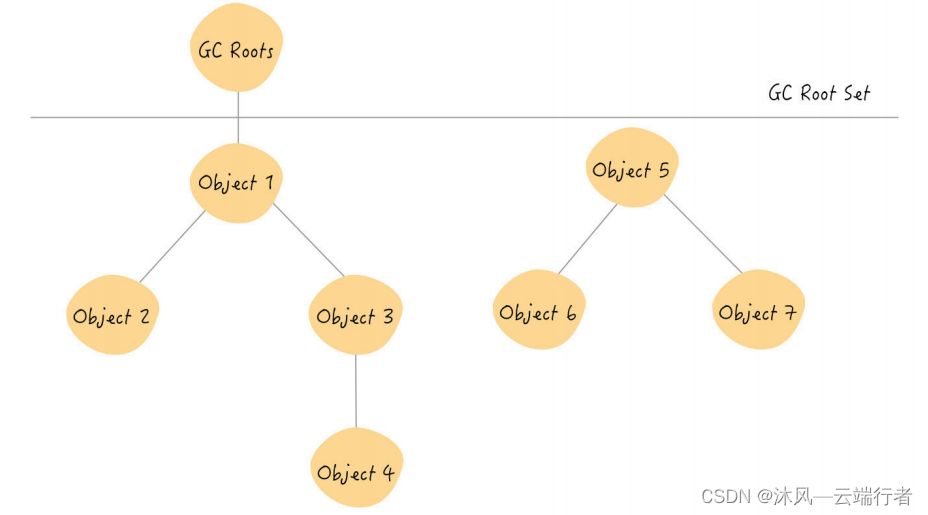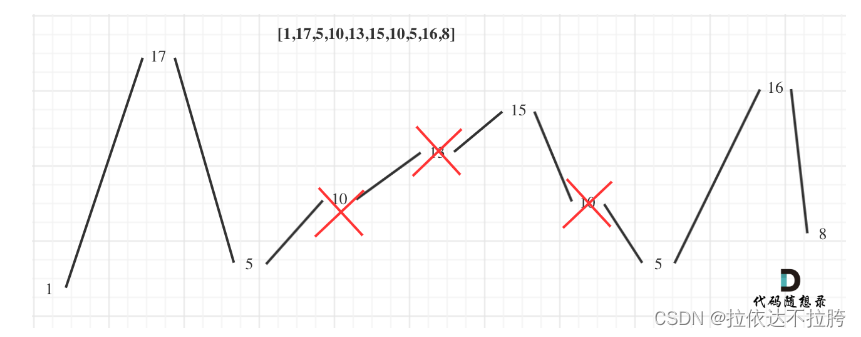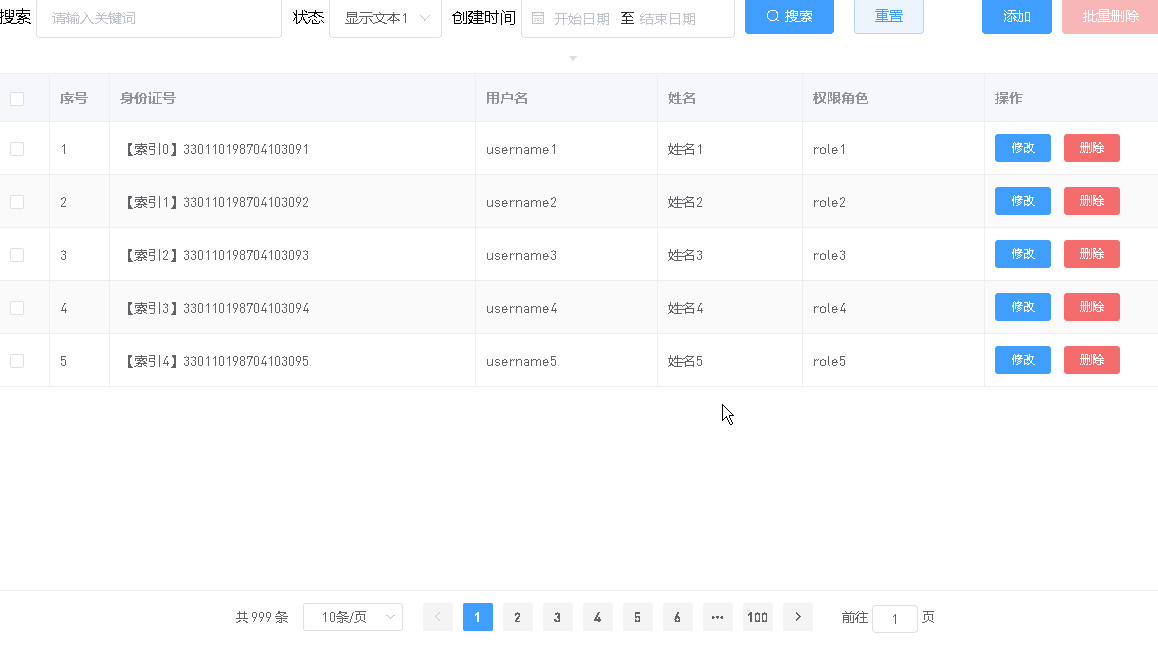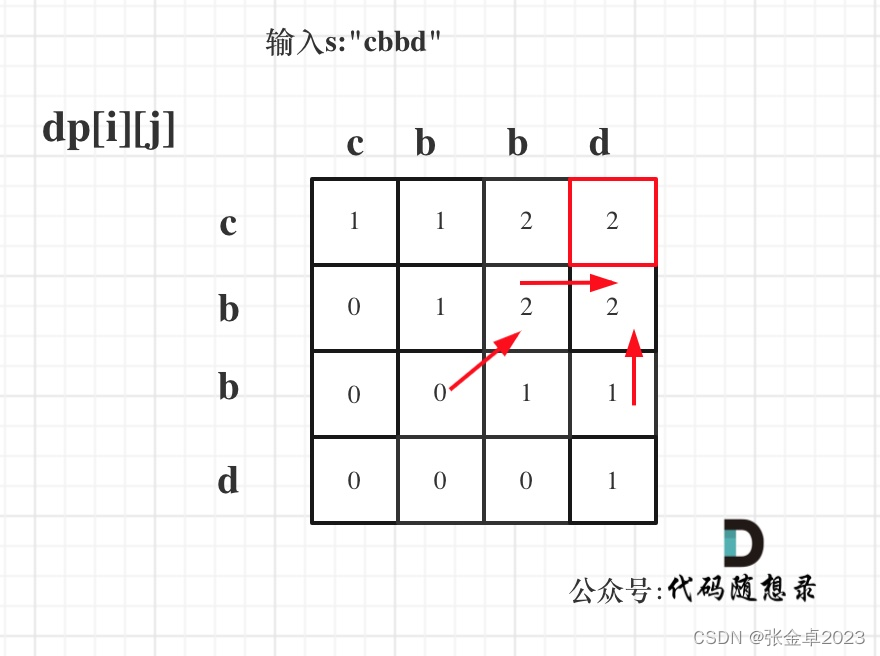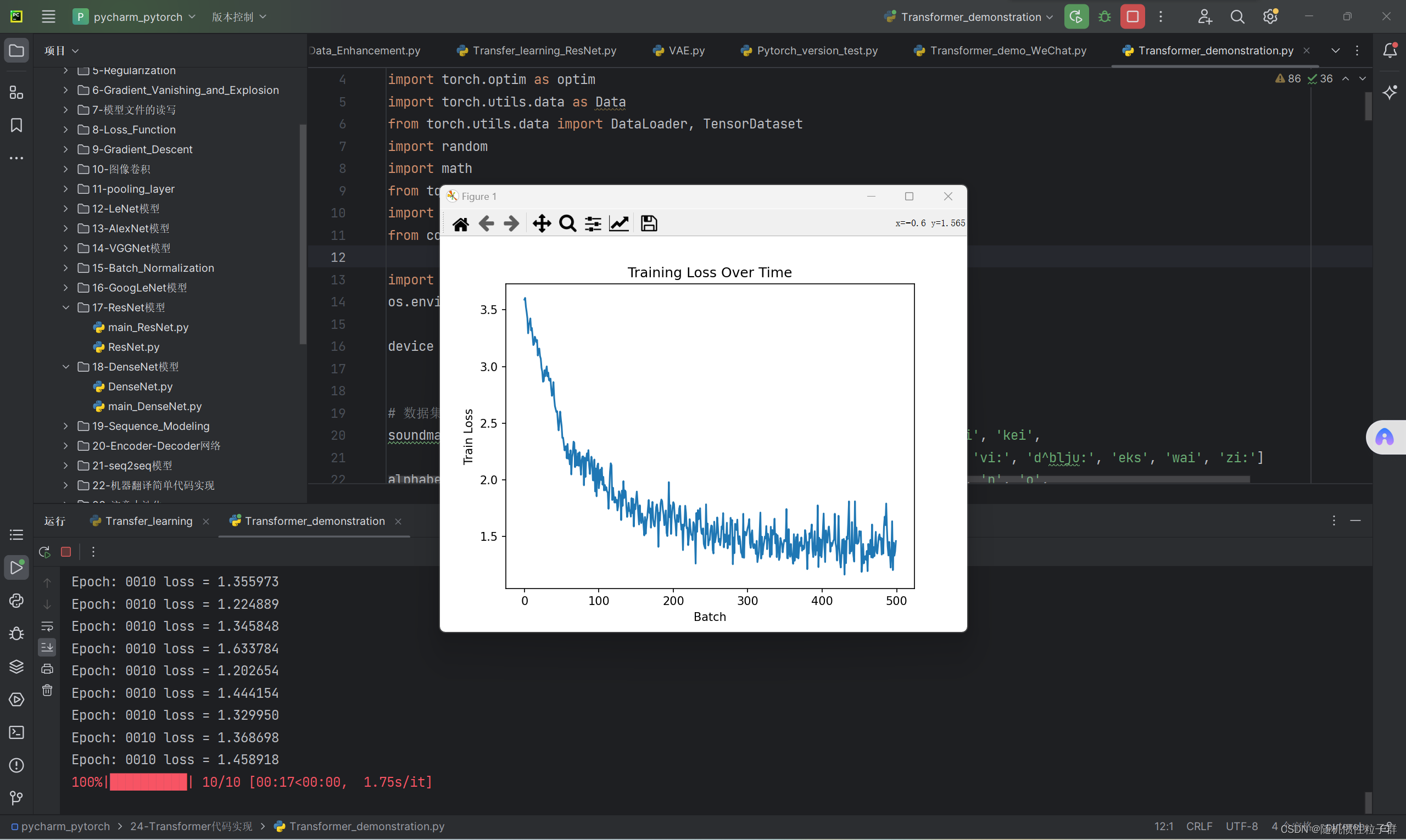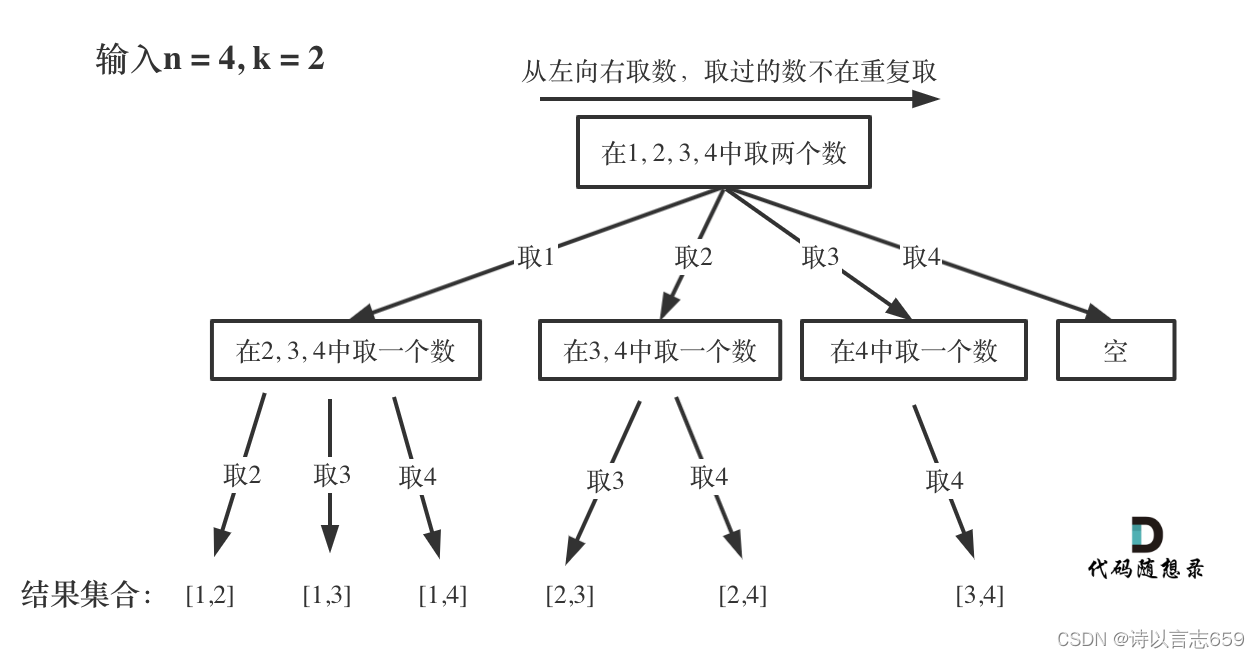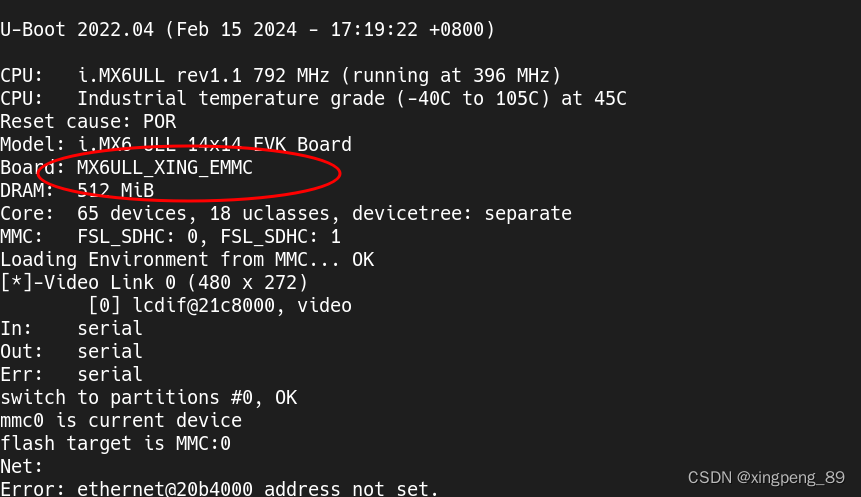Diffusion Models视频生成-博客汇总
前言:在SVD中,对运动的控制可以分成对镜头运动的控制和对内容运动的控制,这篇博客详细通过代码讲解如何对内容运动的控制。
目录
方法一:motion_bucket_id
简述
代码解读
方法二:Attention Scaling
简述
代码解读
方法一:motion_bucket_id
简述
描述物体的运动程度,在pipeline中可以直接指定这个参数,默认的参数是127,一般可以设定在[0,300]之间。
数值越高则代表画面中运动程度越高。
详细的实验效果可以参考:https://www.reddit.com/r/StableDiffusion/comments/183mg95/stable_vide_diffusion_motion_bucket_id_comparison/
代码解读
在svd预训练的时候已经将motion_bucket_id加入到模型中,加入到方法是和fps、noise strength组成一个列表,加入到timesteps中。
# 5. Get Added Time IDs
added_time_ids = self._get_add_time_ids(
fps,
motion_bucket_id,
noise_aug_strength,
image_embeddings.dtype,
batch_size,
num_videos_per_prompt,
self.do_classifier_free_guidance,
) def _get_add_time_ids(
self,
fps,
motion_bucket_id,
noise_aug_strength,
dtype,
batch_size,
num_videos_per_prompt,
do_classifier_free_guidance,
):
add_time_ids = [fps, motion_bucket_id, noise_aug_strength]
passed_add_embed_dim = self.unet.config.addition_time_embed_dim * len(add_time_ids)
expected_add_embed_dim = self.unet.add_embedding.linear_1.in_features
if expected_add_embed_dim != passed_add_embed_dim:
raise ValueError(
f"Model expects an added time embedding vector of length {expected_add_embed_dim}, but a vector of {passed_add_embed_dim} was created. The model has an incorrect config. Please check `unet.config.time_embedding_type` and `text_encoder_2.config.projection_dim`."
)
add_time_ids = torch.tensor([add_time_ids], dtype=dtype)
add_time_ids = add_time_ids.repeat(batch_size * num_videos_per_prompt, 1)
if do_classifier_free_guidance:
add_time_ids = torch.cat([add_time_ids, add_time_ids])
return add_time_ids方法二:Attention Scaling
简述
这个在SVD的diffusers代码中没有暴露出接口调整。Attention Scaling越大,画面中的运动程度就越高。
attention scaling指的是在计算attention的时候的sqrt(1/d):
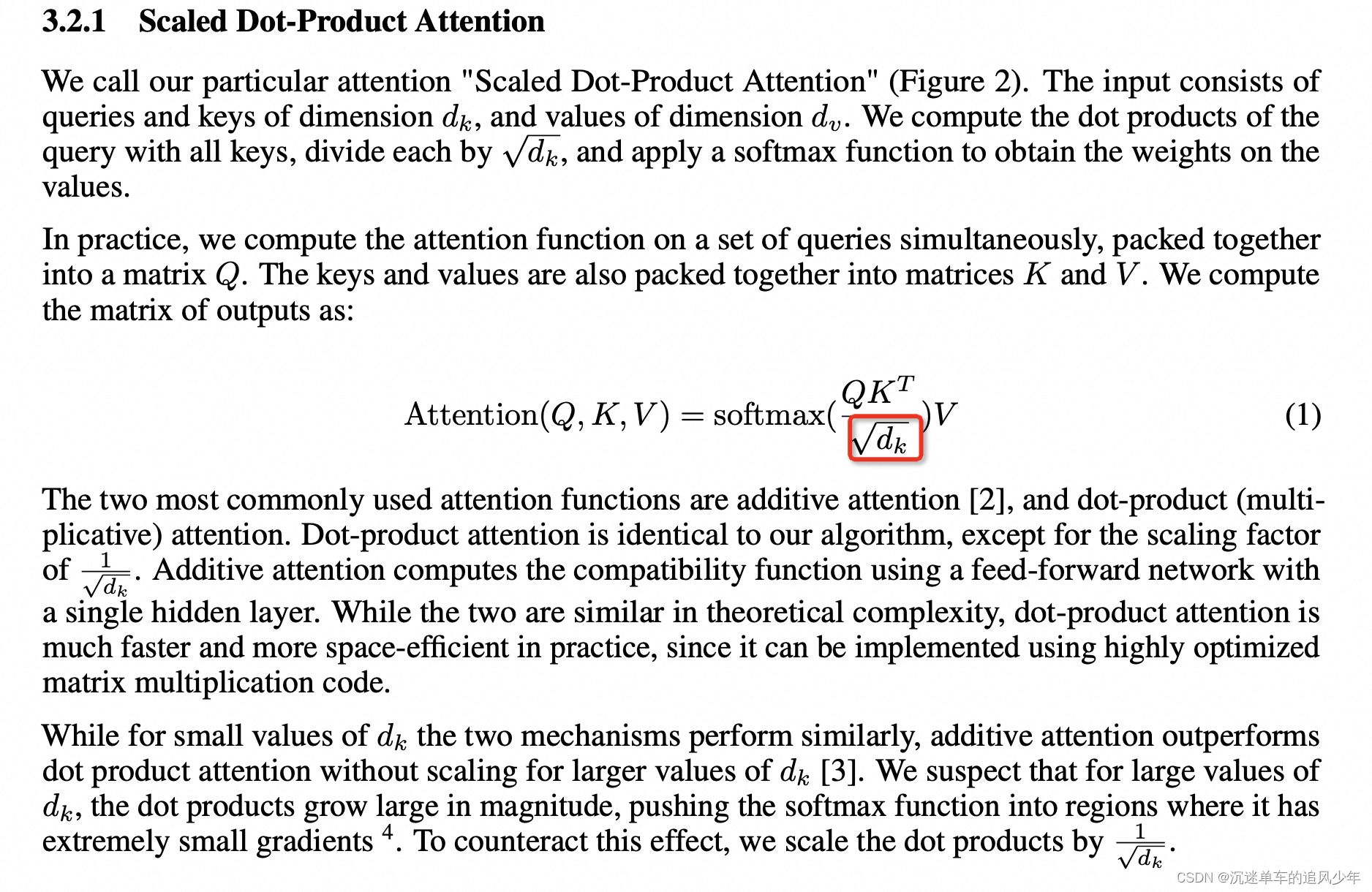
参考博客:Motion Control with Attention Scaling

代码解读
diffusers中所有Attention计算都在class Attention中,其中scale_qk是暴露出来的参数,我们最方便的方法是直接在源码中更改:
self.scale = dim_head**-0.5 if self.scale_qk else 1.0完整代码如下:
@maybe_allow_in_graph
class Attention(nn.Module):
r"""
A cross attention layer.
Parameters:
query_dim (`int`):
The number of channels in the query.
cross_attention_dim (`int`, *optional*):
The number of channels in the encoder_hidden_states. If not given, defaults to `query_dim`.
heads (`int`, *optional*, defaults to 8):
The number of heads to use for multi-head attention.
dim_head (`int`, *optional*, defaults to 64):
The number of channels in each head.
dropout (`float`, *optional*, defaults to 0.0):
The dropout probability to use.
bias (`bool`, *optional*, defaults to False):
Set to `True` for the query, key, and value linear layers to contain a bias parameter.
upcast_attention (`bool`, *optional*, defaults to False):
Set to `True` to upcast the attention computation to `float32`.
upcast_softmax (`bool`, *optional*, defaults to False):
Set to `True` to upcast the softmax computation to `float32`.
cross_attention_norm (`str`, *optional*, defaults to `None`):
The type of normalization to use for the cross attention. Can be `None`, `layer_norm`, or `group_norm`.
cross_attention_norm_num_groups (`int`, *optional*, defaults to 32):
The number of groups to use for the group norm in the cross attention.
added_kv_proj_dim (`int`, *optional*, defaults to `None`):
The number of channels to use for the added key and value projections. If `None`, no projection is used.
norm_num_groups (`int`, *optional*, defaults to `None`):
The number of groups to use for the group norm in the attention.
spatial_norm_dim (`int`, *optional*, defaults to `None`):
The number of channels to use for the spatial normalization.
out_bias (`bool`, *optional*, defaults to `True`):
Set to `True` to use a bias in the output linear layer.
scale_qk (`bool`, *optional*, defaults to `True`):
Set to `True` to scale the query and key by `1 / sqrt(dim_head)`.
only_cross_attention (`bool`, *optional*, defaults to `False`):
Set to `True` to only use cross attention and not added_kv_proj_dim. Can only be set to `True` if
`added_kv_proj_dim` is not `None`.
eps (`float`, *optional*, defaults to 1e-5):
An additional value added to the denominator in group normalization that is used for numerical stability.
rescale_output_factor (`float`, *optional*, defaults to 1.0):
A factor to rescale the output by dividing it with this value.
residual_connection (`bool`, *optional*, defaults to `False`):
Set to `True` to add the residual connection to the output.
_from_deprecated_attn_block (`bool`, *optional*, defaults to `False`):
Set to `True` if the attention block is loaded from a deprecated state dict.
processor (`AttnProcessor`, *optional*, defaults to `None`):
The attention processor to use. If `None`, defaults to `AttnProcessor2_0` if `torch 2.x` is used and
`AttnProcessor` otherwise.
"""
def __init__(
self,
query_dim: int,
cross_attention_dim: Optional[int] = None,
heads: int = 8,
dim_head: int = 64,
dropout: float = 0.0,
bias: bool = False,
upcast_attention: bool = False,
upcast_softmax: bool = False,
cross_attention_norm: Optional[str] = None,
cross_attention_norm_num_groups: int = 32,
added_kv_proj_dim: Optional[int] = None,
norm_num_groups: Optional[int] = None,
spatial_norm_dim: Optional[int] = None,
out_bias: bool = True,
scale_qk: bool = True,
only_cross_attention: bool = False,
eps: float = 1e-5,
rescale_output_factor: float = 1.0,
residual_connection: bool = False,
_from_deprecated_attn_block: bool = False,
processor: Optional["AttnProcessor"] = None,
out_dim: int = None,
):
super().__init__()
self.inner_dim = out_dim if out_dim is not None else dim_head * heads
self.query_dim = query_dim
self.cross_attention_dim = cross_attention_dim if cross_attention_dim is not None else query_dim
self.upcast_attention = upcast_attention
self.upcast_softmax = upcast_softmax
self.rescale_output_factor = rescale_output_factor
self.residual_connection = residual_connection
self.dropout = dropout
self.fused_projections = False
self.out_dim = out_dim if out_dim is not None else query_dim
# we make use of this private variable to know whether this class is loaded
# with an deprecated state dict so that we can convert it on the fly
self._from_deprecated_attn_block = _from_deprecated_attn_block
self.scale_qk = scale_qk
self.scale = dim_head**-0.5 if self.scale_qk else 1.0
self.heads = out_dim // dim_head if out_dim is not None else heads
# for slice_size > 0 the attention score computation
# is split across the batch axis to save memory
# You can set slice_size with `set_attention_slice`
self.sliceable_head_dim = heads
self.added_kv_proj_dim = added_kv_proj_dim
self.only_cross_attention = only_cross_attention
if self.added_kv_proj_dim is None and self.only_cross_attention:
raise ValueError(
"`only_cross_attention` can only be set to True if `added_kv_proj_dim` is not None. Make sure to set either `only_cross_attention=False` or define `added_kv_proj_dim`."
)
if norm_num_groups is not None:
self.group_norm = nn.GroupNorm(num_channels=query_dim, num_groups=norm_num_groups, eps=eps, affine=True)
else:
self.group_norm = None
if spatial_norm_dim is not None:
self.spatial_norm = SpatialNorm(f_channels=query_dim, zq_channels=spatial_norm_dim)
else:
self.spatial_norm = None
if cross_attention_norm is None:
self.norm_cross = None
elif cross_attention_norm == "layer_norm":
self.norm_cross = nn.LayerNorm(self.cross_attention_dim)
elif cross_attention_norm == "group_norm":
if self.added_kv_proj_dim is not None:
# The given `encoder_hidden_states` are initially of shape
# (batch_size, seq_len, added_kv_proj_dim) before being projected
# to (batch_size, seq_len, cross_attention_dim). The norm is applied
# before the projection, so we need to use `added_kv_proj_dim` as
# the number of channels for the group norm.
norm_cross_num_channels = added_kv_proj_dim
else:
norm_cross_num_channels = self.cross_attention_dim
self.norm_cross = nn.GroupNorm(
num_channels=norm_cross_num_channels, num_groups=cross_attention_norm_num_groups, eps=1e-5, affine=True
)
else:
raise ValueError(
f"unknown cross_attention_norm: {cross_attention_norm}. Should be None, 'layer_norm' or 'group_norm'"
)
if USE_PEFT_BACKEND:
linear_cls = nn.Linear
else:
linear_cls = LoRACompatibleLinear
self.linear_cls = linear_cls
self.to_q = linear_cls(query_dim, self.inner_dim, bias=bias)
if not self.only_cross_attention:
# only relevant for the `AddedKVProcessor` classes
self.to_k = linear_cls(self.cross_attention_dim, self.inner_dim, bias=bias)
self.to_v = linear_cls(self.cross_attention_dim, self.inner_dim, bias=bias)
else:
self.to_k = None
self.to_v = None
if self.added_kv_proj_dim is not None:
self.add_k_proj = linear_cls(added_kv_proj_dim, self.inner_dim)
self.add_v_proj = linear_cls(added_kv_proj_dim, self.inner_dim)
self.to_out = nn.ModuleList([])
self.to_out.append(linear_cls(self.inner_dim, self.out_dim, bias=out_bias))
self.to_out.append(nn.Dropout(dropout))
# set attention processor
# We use the AttnProcessor2_0 by default when torch 2.x is used which uses
# torch.nn.functional.scaled_dot_product_attention for native Flash/memory_efficient_attention
# but only if it has the default `scale` argument. TODO remove scale_qk check when we move to torch 2.1
if processor is None:
processor = (
AttnProcessor2_0() if hasattr(F, "scaled_dot_product_attention") and self.scale_qk else AttnProcessor()
)
self.set_processor(processor)
def set_use_memory_efficient_attention_xformers(
self, use_memory_efficient_attention_xformers: bool, attention_op: Optional[Callable] = None
) -> None:
r"""
Set whether to use memory efficient attention from `xformers` or not.
Args:
use_memory_efficient_attention_xformers (`bool`):
Whether to use memory efficient attention from `xformers` or not.
attention_op (`Callable`, *optional*):
The attention operation to use. Defaults to `None` which uses the default attention operation from
`xformers`.
"""
is_lora = hasattr(self, "processor") and isinstance(
self.processor,
LORA_ATTENTION_PROCESSORS,
)
is_custom_diffusion = hasattr(self, "processor") and isinstance(
self.processor,
(CustomDiffusionAttnProcessor, CustomDiffusionXFormersAttnProcessor, CustomDiffusionAttnProcessor2_0),
)
is_added_kv_processor = hasattr(self, "processor") and isinstance(
self.processor,
(
AttnAddedKVProcessor,
AttnAddedKVProcessor2_0,
SlicedAttnAddedKVProcessor,
XFormersAttnAddedKVProcessor,
LoRAAttnAddedKVProcessor,
),
)
if use_memory_efficient_attention_xformers:
if is_added_kv_processor and (is_lora or is_custom_diffusion):
raise NotImplementedError(
f"Memory efficient attention is currently not supported for LoRA or custom diffusion for attention processor type {self.processor}"
)
if not is_xformers_available():
raise ModuleNotFoundError(
(
"Refer to https://github.com/facebookresearch/xformers for more information on how to install"
" xformers"
),
name="xformers",
)
elif not torch.cuda.is_available():
raise ValueError(
"torch.cuda.is_available() should be True but is False. xformers' memory efficient attention is"
" only available for GPU "
)
else:
try:
# Make sure we can run the memory efficient attention
_ = xformers.ops.memory_efficient_attention(
torch.randn((1, 2, 40), device="cuda"),
torch.randn((1, 2, 40), device="cuda"),
torch.randn((1, 2, 40), device="cuda"),
)
except Exception as e:
raise e
if is_lora:
# TODO (sayakpaul): should we throw a warning if someone wants to use the xformers
# variant when using PT 2.0 now that we have LoRAAttnProcessor2_0?
processor = LoRAXFormersAttnProcessor(
hidden_size=self.processor.hidden_size,
cross_attention_dim=self.processor.cross_attention_dim,
rank=self.processor.rank,
attention_op=attention_op,
)
processor.load_state_dict(self.processor.state_dict())
processor.to(self.processor.to_q_lora.up.weight.device)
elif is_custom_diffusion:
processor = CustomDiffusionXFormersAttnProcessor(
train_kv=self.processor.train_kv,
train_q_out=self.processor.train_q_out,
hidden_size=self.processor.hidden_size,
cross_attention_dim=self.processor.cross_attention_dim,
attention_op=attention_op,
)
processor.load_state_dict(self.processor.state_dict())
if hasattr(self.processor, "to_k_custom_diffusion"):
processor.to(self.processor.to_k_custom_diffusion.weight.device)
elif is_added_kv_processor:
# TODO(Patrick, Suraj, William) - currently xformers doesn't work for UnCLIP
# which uses this type of cross attention ONLY because the attention mask of format
# [0, ..., -10.000, ..., 0, ...,] is not supported
# throw warning
logger.info(
"Memory efficient attention with `xformers` might currently not work correctly if an attention mask is required for the attention operation."
)
processor = XFormersAttnAddedKVProcessor(attention_op=attention_op)
else:
processor = XFormersAttnProcessor(attention_op=attention_op)
else:
if is_lora:
attn_processor_class = (
LoRAAttnProcessor2_0 if hasattr(F, "scaled_dot_product_attention") else LoRAAttnProcessor
)
processor = attn_processor_class(
hidden_size=self.processor.hidden_size,
cross_attention_dim=self.processor.cross_attention_dim,
rank=self.processor.rank,
)
processor.load_state_dict(self.processor.state_dict())
processor.to(self.processor.to_q_lora.up.weight.device)
elif is_custom_diffusion:
attn_processor_class = (
CustomDiffusionAttnProcessor2_0
if hasattr(F, "scaled_dot_product_attention")
else CustomDiffusionAttnProcessor
)
processor = attn_processor_class(
train_kv=self.processor.train_kv,
train_q_out=self.processor.train_q_out,
hidden_size=self.processor.hidden_size,
cross_attention_dim=self.processor.cross_attention_dim,
)
processor.load_state_dict(self.processor.state_dict())
if hasattr(self.processor, "to_k_custom_diffusion"):
processor.to(self.processor.to_k_custom_diffusion.weight.device)
else:
# set attention processor
# We use the AttnProcessor2_0 by default when torch 2.x is used which uses
# torch.nn.functional.scaled_dot_product_attention for native Flash/memory_efficient_attention
# but only if it has the default `scale` argument. TODO remove scale_qk check when we move to torch 2.1
processor = (
AttnProcessor2_0()
if hasattr(F, "scaled_dot_product_attention") and self.scale_qk
else AttnProcessor()
)
self.set_processor(processor)
def set_attention_slice(self, slice_size: int) -> None:
r"""
Set the slice size for attention computation.
Args:
slice_size (`int`):
The slice size for attention computation.
"""
if slice_size is not None and slice_size > self.sliceable_head_dim:
raise ValueError(f"slice_size {slice_size} has to be smaller or equal to {self.sliceable_head_dim}.")
if slice_size is not None and self.added_kv_proj_dim is not None:
processor = SlicedAttnAddedKVProcessor(slice_size)
elif slice_size is not None:
processor = SlicedAttnProcessor(slice_size)
elif self.added_kv_proj_dim is not None:
processor = AttnAddedKVProcessor()
else:
# set attention processor
# We use the AttnProcessor2_0 by default when torch 2.x is used which uses
# torch.nn.functional.scaled_dot_product_attention for native Flash/memory_efficient_attention
# but only if it has the default `scale` argument. TODO remove scale_qk check when we move to torch 2.1
processor = (
AttnProcessor2_0() if hasattr(F, "scaled_dot_product_attention") and self.scale_qk else AttnProcessor()
)
self.set_processor(processor)
def set_processor(self, processor: "AttnProcessor", _remove_lora: bool = False) -> None:
r"""
Set the attention processor to use.
Args:
processor (`AttnProcessor`):
The attention processor to use.
_remove_lora (`bool`, *optional*, defaults to `False`):
Set to `True` to remove LoRA layers from the model.
"""
if not USE_PEFT_BACKEND and hasattr(self, "processor") and _remove_lora and self.to_q.lora_layer is not None:
deprecate(
"set_processor to offload LoRA",
"0.26.0",
"In detail, removing LoRA layers via calling `set_default_attn_processor` is deprecated. Please make sure to call `pipe.unload_lora_weights()` instead.",
)
# TODO(Patrick, Sayak) - this can be deprecated once PEFT LoRA integration is complete
# We need to remove all LoRA layers
# Don't forget to remove ALL `_remove_lora` from the codebase
for module in self.modules():
if hasattr(module, "set_lora_layer"):
module.set_lora_layer(None)
# if current processor is in `self._modules` and if passed `processor` is not, we need to
# pop `processor` from `self._modules`
if (
hasattr(self, "processor")
and isinstance(self.processor, torch.nn.Module)
and not isinstance(processor, torch.nn.Module)
):
logger.info(f"You are removing possibly trained weights of {self.processor} with {processor}")
self._modules.pop("processor")
self.processor = processor
def get_processor(self, return_deprecated_lora: bool = False) -> "AttentionProcessor":
r"""
Get the attention processor in use.
Args:
return_deprecated_lora (`bool`, *optional*, defaults to `False`):
Set to `True` to return the deprecated LoRA attention processor.
Returns:
"AttentionProcessor": The attention processor in use.
"""
if not return_deprecated_lora:
return self.processor
# TODO(Sayak, Patrick). The rest of the function is needed to ensure backwards compatible
# serialization format for LoRA Attention Processors. It should be deleted once the integration
# with PEFT is completed.
is_lora_activated = {
name: module.lora_layer is not None
for name, module in self.named_modules()
if hasattr(module, "lora_layer")
}
# 1. if no layer has a LoRA activated we can return the processor as usual
if not any(is_lora_activated.values()):
return self.processor
# If doesn't apply LoRA do `add_k_proj` or `add_v_proj`
is_lora_activated.pop("add_k_proj", None)
is_lora_activated.pop("add_v_proj", None)
# 2. else it is not posssible that only some layers have LoRA activated
if not all(is_lora_activated.values()):
raise ValueError(
f"Make sure that either all layers or no layers have LoRA activated, but have {is_lora_activated}"
)
# 3. And we need to merge the current LoRA layers into the corresponding LoRA attention processor
non_lora_processor_cls_name = self.processor.__class__.__name__
lora_processor_cls = getattr(import_module(__name__), "LoRA" + non_lora_processor_cls_name)
hidden_size = self.inner_dim
# now create a LoRA attention processor from the LoRA layers
if lora_processor_cls in [LoRAAttnProcessor, LoRAAttnProcessor2_0, LoRAXFormersAttnProcessor]:
kwargs = {
"cross_attention_dim": self.cross_attention_dim,
"rank": self.to_q.lora_layer.rank,
"network_alpha": self.to_q.lora_layer.network_alpha,
"q_rank": self.to_q.lora_layer.rank,
"q_hidden_size": self.to_q.lora_layer.out_features,
"k_rank": self.to_k.lora_layer.rank,
"k_hidden_size": self.to_k.lora_layer.out_features,
"v_rank": self.to_v.lora_layer.rank,
"v_hidden_size": self.to_v.lora_layer.out_features,
"out_rank": self.to_out[0].lora_layer.rank,
"out_hidden_size": self.to_out[0].lora_layer.out_features,
}
if hasattr(self.processor, "attention_op"):
kwargs["attention_op"] = self.processor.attention_op
lora_processor = lora_processor_cls(hidden_size, **kwargs)
lora_processor.to_q_lora.load_state_dict(self.to_q.lora_layer.state_dict())
lora_processor.to_k_lora.load_state_dict(self.to_k.lora_layer.state_dict())
lora_processor.to_v_lora.load_state_dict(self.to_v.lora_layer.state_dict())
lora_processor.to_out_lora.load_state_dict(self.to_out[0].lora_layer.state_dict())
elif lora_processor_cls == LoRAAttnAddedKVProcessor:
lora_processor = lora_processor_cls(
hidden_size,
cross_attention_dim=self.add_k_proj.weight.shape[0],
rank=self.to_q.lora_layer.rank,
network_alpha=self.to_q.lora_layer.network_alpha,
)
lora_processor.to_q_lora.load_state_dict(self.to_q.lora_layer.state_dict())
lora_processor.to_k_lora.load_state_dict(self.to_k.lora_layer.state_dict())
lora_processor.to_v_lora.load_state_dict(self.to_v.lora_layer.state_dict())
lora_processor.to_out_lora.load_state_dict(self.to_out[0].lora_layer.state_dict())
# only save if used
if self.add_k_proj.lora_layer is not None:
lora_processor.add_k_proj_lora.load_state_dict(self.add_k_proj.lora_layer.state_dict())
lora_processor.add_v_proj_lora.load_state_dict(self.add_v_proj.lora_layer.state_dict())
else:
lora_processor.add_k_proj_lora = None
lora_processor.add_v_proj_lora = None
else:
raise ValueError(f"{lora_processor_cls} does not exist.")
return lora_processor
def forward(
self,
hidden_states: torch.FloatTensor,
encoder_hidden_states: Optional[torch.FloatTensor] = None,
attention_mask: Optional[torch.FloatTensor] = None,
**cross_attention_kwargs,
) -> torch.Tensor:
r"""
The forward method of the `Attention` class.
Args:
hidden_states (`torch.Tensor`):
The hidden states of the query.
encoder_hidden_states (`torch.Tensor`, *optional*):
The hidden states of the encoder.
attention_mask (`torch.Tensor`, *optional*):
The attention mask to use. If `None`, no mask is applied.
**cross_attention_kwargs:
Additional keyword arguments to pass along to the cross attention.
Returns:
`torch.Tensor`: The output of the attention layer.
"""
# The `Attention` class can call different attention processors / attention functions
# here we simply pass along all tensors to the selected processor class
# For standard processors that are defined here, `**cross_attention_kwargs` is empty
return self.processor(
self,
hidden_states,
encoder_hidden_states=encoder_hidden_states,
attention_mask=attention_mask,
**cross_attention_kwargs,
)
def batch_to_head_dim(self, tensor: torch.Tensor) -> torch.Tensor:
r"""
Reshape the tensor from `[batch_size, seq_len, dim]` to `[batch_size // heads, seq_len, dim * heads]`. `heads`
is the number of heads initialized while constructing the `Attention` class.
Args:
tensor (`torch.Tensor`): The tensor to reshape.
Returns:
`torch.Tensor`: The reshaped tensor.
"""
head_size = self.heads
batch_size, seq_len, dim = tensor.shape
tensor = tensor.reshape(batch_size // head_size, head_size, seq_len, dim)
tensor = tensor.permute(0, 2, 1, 3).reshape(batch_size // head_size, seq_len, dim * head_size)
return tensor
def head_to_batch_dim(self, tensor: torch.Tensor, out_dim: int = 3) -> torch.Tensor:
r"""
Reshape the tensor from `[batch_size, seq_len, dim]` to `[batch_size, seq_len, heads, dim // heads]` `heads` is
the number of heads initialized while constructing the `Attention` class.
Args:
tensor (`torch.Tensor`): The tensor to reshape.
out_dim (`int`, *optional*, defaults to `3`): The output dimension of the tensor. If `3`, the tensor is
reshaped to `[batch_size * heads, seq_len, dim // heads]`.
Returns:
`torch.Tensor`: The reshaped tensor.
"""
head_size = self.heads
batch_size, seq_len, dim = tensor.shape
tensor = tensor.reshape(batch_size, seq_len, head_size, dim // head_size)
tensor = tensor.permute(0, 2, 1, 3)
if out_dim == 3:
tensor = tensor.reshape(batch_size * head_size, seq_len, dim // head_size)
return tensor
def get_attention_scores(
self, query: torch.Tensor, key: torch.Tensor, attention_mask: torch.Tensor = None
) -> torch.Tensor:
r"""
Compute the attention scores.
Args:
query (`torch.Tensor`): The query tensor.
key (`torch.Tensor`): The key tensor.
attention_mask (`torch.Tensor`, *optional*): The attention mask to use. If `None`, no mask is applied.
Returns:
`torch.Tensor`: The attention probabilities/scores.
"""
dtype = query.dtype
if self.upcast_attention:
query = query.float()
key = key.float()
if attention_mask is None:
baddbmm_input = torch.empty(
query.shape[0], query.shape[1], key.shape[1], dtype=query.dtype, device=query.device
)
beta = 0
else:
baddbmm_input = attention_mask
beta = 1
attention_scores = torch.baddbmm(
baddbmm_input,
query,
key.transpose(-1, -2),
beta=beta,
alpha=self.scale,
)
del baddbmm_input
if self.upcast_softmax:
attention_scores = attention_scores.float()
attention_probs = attention_scores.softmax(dim=-1)
del attention_scores
attention_probs = attention_probs.to(dtype)
return attention_probs
def prepare_attention_mask(
self, attention_mask: torch.Tensor, target_length: int, batch_size: int, out_dim: int = 3
) -> torch.Tensor:
r"""
Prepare the attention mask for the attention computation.
Args:
attention_mask (`torch.Tensor`):
The attention mask to prepare.
target_length (`int`):
The target length of the attention mask. This is the length of the attention mask after padding.
batch_size (`int`):
The batch size, which is used to repeat the attention mask.
out_dim (`int`, *optional*, defaults to `3`):
The output dimension of the attention mask. Can be either `3` or `4`.
Returns:
`torch.Tensor`: The prepared attention mask.
"""
head_size = self.heads
if attention_mask is None:
return attention_mask
current_length: int = attention_mask.shape[-1]
if current_length != target_length:
if attention_mask.device.type == "mps":
# HACK: MPS: Does not support padding by greater than dimension of input tensor.
# Instead, we can manually construct the padding tensor.
padding_shape = (attention_mask.shape[0], attention_mask.shape[1], target_length)
padding = torch.zeros(padding_shape, dtype=attention_mask.dtype, device=attention_mask.device)
attention_mask = torch.cat([attention_mask, padding], dim=2)
else:
# TODO: for pipelines such as stable-diffusion, padding cross-attn mask:
# we want to instead pad by (0, remaining_length), where remaining_length is:
# remaining_length: int = target_length - current_length
# TODO: re-enable tests/models/test_models_unet_2d_condition.py#test_model_xattn_padding
attention_mask = F.pad(attention_mask, (0, target_length), value=0.0)
if out_dim == 3:
if attention_mask.shape[0] < batch_size * head_size:
attention_mask = attention_mask.repeat_interleave(head_size, dim=0)
elif out_dim == 4:
attention_mask = attention_mask.unsqueeze(1)
attention_mask = attention_mask.repeat_interleave(head_size, dim=1)
return attention_mask
def norm_encoder_hidden_states(self, encoder_hidden_states: torch.Tensor) -> torch.Tensor:
r"""
Normalize the encoder hidden states. Requires `self.norm_cross` to be specified when constructing the
`Attention` class.
Args:
encoder_hidden_states (`torch.Tensor`): Hidden states of the encoder.
Returns:
`torch.Tensor`: The normalized encoder hidden states.
"""
assert self.norm_cross is not None, "self.norm_cross must be defined to call self.norm_encoder_hidden_states"
if isinstance(self.norm_cross, nn.LayerNorm):
encoder_hidden_states = self.norm_cross(encoder_hidden_states)
elif isinstance(self.norm_cross, nn.GroupNorm):
# Group norm norms along the channels dimension and expects
# input to be in the shape of (N, C, *). In this case, we want
# to norm along the hidden dimension, so we need to move
# (batch_size, sequence_length, hidden_size) ->
# (batch_size, hidden_size, sequence_length)
encoder_hidden_states = encoder_hidden_states.transpose(1, 2)
encoder_hidden_states = self.norm_cross(encoder_hidden_states)
encoder_hidden_states = encoder_hidden_states.transpose(1, 2)
else:
assert False
return encoder_hidden_states
@torch.no_grad()
def fuse_projections(self, fuse=True):
is_cross_attention = self.cross_attention_dim != self.query_dim
device = self.to_q.weight.data.device
dtype = self.to_q.weight.data.dtype
if not is_cross_attention:
# fetch weight matrices.
concatenated_weights = torch.cat([self.to_q.weight.data, self.to_k.weight.data, self.to_v.weight.data])
in_features = concatenated_weights.shape[1]
out_features = concatenated_weights.shape[0]
# create a new single projection layer and copy over the weights.
self.to_qkv = self.linear_cls(in_features, out_features, bias=False, device=device, dtype=dtype)
self.to_qkv.weight.copy_(concatenated_weights)
else:
concatenated_weights = torch.cat([self.to_k.weight.data, self.to_v.weight.data])
in_features = concatenated_weights.shape[1]
out_features = concatenated_weights.shape[0]
self.to_kv = self.linear_cls(in_features, out_features, bias=False, device=device, dtype=dtype)
self.to_kv.weight.copy_(concatenated_weights)
self.fused_projections = fuse
class AttnProcessor:
r"""
Default processor for performing attention-related computations.
"""
def __call__(
self,
attn: Attention,
hidden_states: torch.FloatTensor,
encoder_hidden_states: Optional[torch.FloatTensor] = None,
attention_mask: Optional[torch.FloatTensor] = None,
temb: Optional[torch.FloatTensor] = None,
scale: float = 1.0,
) -> torch.Tensor:
residual = hidden_states
args = () if USE_PEFT_BACKEND else (scale,)
if attn.spatial_norm is not None:
hidden_states = attn.spatial_norm(hidden_states, temb)
input_ndim = hidden_states.ndim
if input_ndim == 4:
batch_size, channel, height, width = hidden_states.shape
hidden_states = hidden_states.view(batch_size, channel, height * width).transpose(1, 2)
batch_size, sequence_length, _ = (
hidden_states.shape if encoder_hidden_states is None else encoder_hidden_states.shape
)
attention_mask = attn.prepare_attention_mask(attention_mask, sequence_length, batch_size)
if attn.group_norm is not None:
hidden_states = attn.group_norm(hidden_states.transpose(1, 2)).transpose(1, 2)
query = attn.to_q(hidden_states, *args)
if encoder_hidden_states is None:
encoder_hidden_states = hidden_states
elif attn.norm_cross:
encoder_hidden_states = attn.norm_encoder_hidden_states(encoder_hidden_states)
key = attn.to_k(encoder_hidden_states, *args)
value = attn.to_v(encoder_hidden_states, *args)
query = attn.head_to_batch_dim(query)
key = attn.head_to_batch_dim(key)
value = attn.head_to_batch_dim(value)
attention_probs = attn.get_attention_scores(query, key, attention_mask)
hidden_states = torch.bmm(attention_probs, value)
hidden_states = attn.batch_to_head_dim(hidden_states)
# linear proj
hidden_states = attn.to_out[0](hidden_states, *args)
# dropout
hidden_states = attn.to_out[1](hidden_states)
if input_ndim == 4:
hidden_states = hidden_states.transpose(-1, -2).reshape(batch_size, channel, height, width)
if attn.residual_connection:
hidden_states = hidden_states + residual
hidden_states = hidden_states / attn.rescale_output_factor
return hidden_states
class CustomDiffusionAttnProcessor(nn.Module):
r"""
Processor for implementing attention for the Custom Diffusion method.
Args:
train_kv (`bool`, defaults to `True`):
Whether to newly train the key and value matrices corresponding to the text features.
train_q_out (`bool`, defaults to `True`):
Whether to newly train query matrices corresponding to the latent image features.
hidden_size (`int`, *optional*, defaults to `None`):
The hidden size of the attention layer.
cross_attention_dim (`int`, *optional*, defaults to `None`):
The number of channels in the `encoder_hidden_states`.
out_bias (`bool`, defaults to `True`):
Whether to include the bias parameter in `train_q_out`.
dropout (`float`, *optional*, defaults to 0.0):
The dropout probability to use.
"""
def __init__(
self,
train_kv: bool = True,
train_q_out: bool = True,
hidden_size: Optional[int] = None,
cross_attention_dim: Optional[int] = None,
out_bias: bool = True,
dropout: float = 0.0,
):
super().__init__()
self.train_kv = train_kv
self.train_q_out = train_q_out
self.hidden_size = hidden_size
self.cross_attention_dim = cross_attention_dim
# `_custom_diffusion` id for easy serialization and loading.
if self.train_kv:
self.to_k_custom_diffusion = nn.Linear(cross_attention_dim or hidden_size, hidden_size, bias=False)
self.to_v_custom_diffusion = nn.Linear(cross_attention_dim or hidden_size, hidden_size, bias=False)
if self.train_q_out:
self.to_q_custom_diffusion = nn.Linear(hidden_size, hidden_size, bias=False)
self.to_out_custom_diffusion = nn.ModuleList([])
self.to_out_custom_diffusion.append(nn.Linear(hidden_size, hidden_size, bias=out_bias))
self.to_out_custom_diffusion.append(nn.Dropout(dropout))
def __call__(
self,
attn: Attention,
hidden_states: torch.FloatTensor,
encoder_hidden_states: Optional[torch.FloatTensor] = None,
attention_mask: Optional[torch.FloatTensor] = None,
) -> torch.Tensor:
batch_size, sequence_length, _ = hidden_states.shape
attention_mask = attn.prepare_attention_mask(attention_mask, sequence_length, batch_size)
if self.train_q_out:
query = self.to_q_custom_diffusion(hidden_states).to(attn.to_q.weight.dtype)
else:
query = attn.to_q(hidden_states.to(attn.to_q.weight.dtype))
if encoder_hidden_states is None:
crossattn = False
encoder_hidden_states = hidden_states
else:
crossattn = True
if attn.norm_cross:
encoder_hidden_states = attn.norm_encoder_hidden_states(encoder_hidden_states)
if self.train_kv:
key = self.to_k_custom_diffusion(encoder_hidden_states.to(self.to_k_custom_diffusion.weight.dtype))
value = self.to_v_custom_diffusion(encoder_hidden_states.to(self.to_v_custom_diffusion.weight.dtype))
key = key.to(attn.to_q.weight.dtype)
value = value.to(attn.to_q.weight.dtype)
else:
key = attn.to_k(encoder_hidden_states)
value = attn.to_v(encoder_hidden_states)
if crossattn:
detach = torch.ones_like(key)
detach[:, :1, :] = detach[:, :1, :] * 0.0
key = detach * key + (1 - detach) * key.detach()
value = detach * value + (1 - detach) * value.detach()
query = attn.head_to_batch_dim(query)
key = attn.head_to_batch_dim(key)
value = attn.head_to_batch_dim(value)
attention_probs = attn.get_attention_scores(query, key, attention_mask)
hidden_states = torch.bmm(attention_probs, value)
hidden_states = attn.batch_to_head_dim(hidden_states)
if self.train_q_out:
# linear proj
hidden_states = self.to_out_custom_diffusion[0](hidden_states)
# dropout
hidden_states = self.to_out_custom_diffusion[1](hidden_states)
else:
# linear proj
hidden_states = attn.to_out[0](hidden_states)
# dropout
hidden_states = attn.to_out[1](hidden_states)
return hidden_states
class AttnAddedKVProcessor:
r"""
Processor for performing attention-related computations with extra learnable key and value matrices for the text
encoder.
"""
def __call__(
self,
attn: Attention,
hidden_states: torch.FloatTensor,
encoder_hidden_states: Optional[torch.FloatTensor] = None,
attention_mask: Optional[torch.FloatTensor] = None,
scale: float = 1.0,
) -> torch.Tensor:
residual = hidden_states
args = () if USE_PEFT_BACKEND else (scale,)
hidden_states = hidden_states.view(hidden_states.shape[0], hidden_states.shape[1], -1).transpose(1, 2)
batch_size, sequence_length, _ = hidden_states.shape
attention_mask = attn.prepare_attention_mask(attention_mask, sequence_length, batch_size)
if encoder_hidden_states is None:
encoder_hidden_states = hidden_states
elif attn.norm_cross:
encoder_hidden_states = attn.norm_encoder_hidden_states(encoder_hidden_states)
hidden_states = attn.group_norm(hidden_states.transpose(1, 2)).transpose(1, 2)
query = attn.to_q(hidden_states, *args)
query = attn.head_to_batch_dim(query)
encoder_hidden_states_key_proj = attn.add_k_proj(encoder_hidden_states, *args)
encoder_hidden_states_value_proj = attn.add_v_proj(encoder_hidden_states, *args)
encoder_hidden_states_key_proj = attn.head_to_batch_dim(encoder_hidden_states_key_proj)
encoder_hidden_states_value_proj = attn.head_to_batch_dim(encoder_hidden_states_value_proj)
if not attn.only_cross_attention:
key = attn.to_k(hidden_states, *args)
value = attn.to_v(hidden_states, *args)
key = attn.head_to_batch_dim(key)
value = attn.head_to_batch_dim(value)
key = torch.cat([encoder_hidden_states_key_proj, key], dim=1)
value = torch.cat([encoder_hidden_states_value_proj, value], dim=1)
else:
key = encoder_hidden_states_key_proj
value = encoder_hidden_states_value_proj
attention_probs = attn.get_attention_scores(query, key, attention_mask)
hidden_states = torch.bmm(attention_probs, value)
hidden_states = attn.batch_to_head_dim(hidden_states)
# linear proj
hidden_states = attn.to_out[0](hidden_states, *args)
# dropout
hidden_states = attn.to_out[1](hidden_states)
hidden_states = hidden_states.transpose(-1, -2).reshape(residual.shape)
hidden_states = hidden_states + residual
return hidden_states
class AttnAddedKVProcessor2_0:
r"""
Processor for performing scaled dot-product attention (enabled by default if you're using PyTorch 2.0), with extra
learnable key and value matrices for the text encoder.
"""
def __init__(self):
if not hasattr(F, "scaled_dot_product_attention"):
raise ImportError(
"AttnAddedKVProcessor2_0 requires PyTorch 2.0, to use it, please upgrade PyTorch to 2.0."
)
def __call__(
self,
attn: Attention,
hidden_states: torch.FloatTensor,
encoder_hidden_states: Optional[torch.FloatTensor] = None,
attention_mask: Optional[torch.FloatTensor] = None,
scale: float = 1.0,
) -> torch.Tensor:
residual = hidden_states
args = () if USE_PEFT_BACKEND else (scale,)
hidden_states = hidden_states.view(hidden_states.shape[0], hidden_states.shape[1], -1).transpose(1, 2)
batch_size, sequence_length, _ = hidden_states.shape
attention_mask = attn.prepare_attention_mask(attention_mask, sequence_length, batch_size, out_dim=4)
if encoder_hidden_states is None:
encoder_hidden_states = hidden_states
elif attn.norm_cross:
encoder_hidden_states = attn.norm_encoder_hidden_states(encoder_hidden_states)
hidden_states = attn.group_norm(hidden_states.transpose(1, 2)).transpose(1, 2)
query = attn.to_q(hidden_states, *args)
query = attn.head_to_batch_dim(query, out_dim=4)
encoder_hidden_states_key_proj = attn.add_k_proj(encoder_hidden_states)
encoder_hidden_states_value_proj = attn.add_v_proj(encoder_hidden_states)
encoder_hidden_states_key_proj = attn.head_to_batch_dim(encoder_hidden_states_key_proj, out_dim=4)
encoder_hidden_states_value_proj = attn.head_to_batch_dim(encoder_hidden_states_value_proj, out_dim=4)
if not attn.only_cross_attention:
key = attn.to_k(hidden_states, *args)
value = attn.to_v(hidden_states, *args)
key = attn.head_to_batch_dim(key, out_dim=4)
value = attn.head_to_batch_dim(value, out_dim=4)
key = torch.cat([encoder_hidden_states_key_proj, key], dim=2)
value = torch.cat([encoder_hidden_states_value_proj, value], dim=2)
else:
key = encoder_hidden_states_key_proj
value = encoder_hidden_states_value_proj
# the output of sdp = (batch, num_heads, seq_len, head_dim)
# TODO: add support for attn.scale when we move to Torch 2.1
hidden_states = F.scaled_dot_product_attention(
query, key, value, attn_mask=attention_mask, dropout_p=0.0, is_causal=False
)
hidden_states = hidden_states.transpose(1, 2).reshape(batch_size, -1, residual.shape[1])
# linear proj
hidden_states = attn.to_out[0](hidden_states, *args)
# dropout
hidden_states = attn.to_out[1](hidden_states)
hidden_states = hidden_states.transpose(-1, -2).reshape(residual.shape)
hidden_states = hidden_states + residual
return hidden_states






